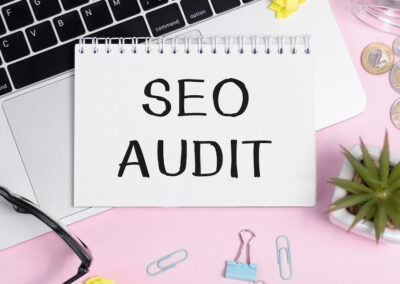Whether you are running a small business from home, or have already invested in a storefront location, having a website is crucial in determining your business’ success. We understand that your entrepreneurial journey can be an overwhelming journey. That’s why we have prepared a checklist for you to kickstart the website building process.
1. Select A Domain Name
The domain name is usually the same name as your business. It is the entry point for your website. Thus, it also doubles up as the URL, which is the website address that you will share with your customers. To minimise confusion, avoid slang or abbreviations, acronyms and also numbers.
As part of this process, you will also have to decide on the domain extension. This refers to the suffix at the end of your domain name. Examples are .com, .net or .biz. Best practise would be to stick to a .com.
Next is to ensure that the domain name of choice is available for purchase in a domain registrar. You will also need to check the copyrights of the domain name such that it does not contain any registered trademarks. An example of a good and SEO-friendly domain would be www.LightsInSingapore.com
Most of the time, a good domain name would have been taken up already. However, you can actually reach out to the owner of the domain in order to purchase it from them. Some popular domain registrars that you can look into are:
- GoDaddy
- Vodien
- BlueHost
2. Select A Web Host With Reliable Tech Support
This is sometimes referred to as a host provider. It refers to a hosting company that offers hosting services for a website to be viewed on the internet. This means that you do not have to maintain your own server. Simply connect your domain name to your hosting provider and users will be able to access your website. Web hosting can cost anywhere between $2 to $1000++ per month.
Some things for your to consider when selecting your host provider are:
- Tech Support – Quick and reliable customer service is crucial when you encounter website issues. Being able to talk to an expert support to solve your problem is invaluable
- Site Speed – People are getting more and more impatient online. Users will not wait for your site to load. Thus, ensure that your hosting provider is able to support fast loading speeds
Other factors to consider:
- Shared Server — This is the cheapest option available. This is because you will be sharing a server’s resources with other customers. When resources are stretched too thin, the site performance such as loading time and security will also suffer. For example, if a website on your shared server is hacked, your website will also be infected.
- Dedicated Server — This is the most expensive option because it entails have an entire physical server dedicated to hosting your website. Thus, all resources are yours. Thus factors such as loading speed and security are optimally maintained. However, this option is usually too expensive for small businesses.
- Virtual Private Server (VPS) — This option is the intermediary option which is a great compromise to the earlier options. A VPS is essentially one machine that is partitioned to act like multiple machines. Thus, it is able to offer affordability similar to a shared server, but with enhanced security and loading speed to that of a dedicated server.
Some popular web hosting companies are:
- GoDaddy
- BlueHost
3. Select A CMS System
A Content Management System (CMS) is a program that helps you create and manage digital content without much technical knowledge. This means that you are able to customise your layout and create new pages and posts easily. Some popular CMS systems are:
- WordPress
- Drupal
- Squarespace
4. Select An E-Commerce Platform
This is especially crucial if you are building an e-commerce site. The correct platform will allow your customers to financially transact with you online. Some popular ecommerce platforms are:
- WooCommerce
- Shopify
- Business Squarespace
5. Start Building Pages
Your website needs to be easy to navigate while also being aesthetically pleasing to the customer. Ensure that each page layouts are mobile-responsive. There are some standard pages that is essential to any business, such as:
- Home
- About Us
- Products / Services
- Sitemap
- Contact Us
- Terms of us
- Privacy Policy
Conclusion
Building your first website may seem intimidating in the beginning. However, we have created a more streamlined approach to guide you in building your first website. Once you have a website up and running, efforts are needed to keep it relevant. A good practise would be to set up a website maintenance plan to ensure your website is in good working condition.
Sometimes even a checklist can be quite daunting. Simply reach out and talk to us. Depending on your business needs, we will share with your our advice and recommendations on the best options to build your first website.





0 Comments